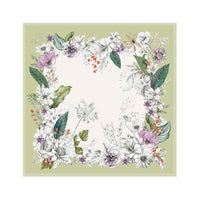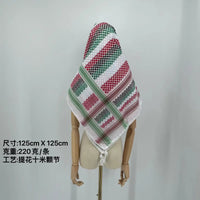The Great Unraveling: Pashmina vs. Scarf
Ever find yourself staring at a beautiful, soft wrap and wondering, "Is this a pashmina or just a really nice scarf?" You're not alone. The terms are often used interchangeably, but there's a key difference that separates a luxurious heirloom from a versatile accessory. While a pashmina is a type of scarf, not every scarf gets to be a pashmina. Let's break down what makes them distinct.
What Makes a Pashmina So Special?
The word "pashmina" has a story of its own. It's not just a style; it's a specific, luxurious fiber.
-
The Material: True pashmina is made from the ultra-fine cashmere wool of the Changthangi goat, native to the high altitudes of the Himalayas. This wool is incredibly soft, lightweight, and exceptionally warm. It's often called "diamond fiber" because of its rarity and quality.
-
The Feel: The signature feel of a real pashmina is unmistakable. It's buttery-soft and has a delicate, silky texture that drapes beautifully.
-
The Price: Due to the rarity of the goat wool and the labor-intensive process of harvesting and weaving, authentic pashminas come with a higher price tag. They are a true investment piece.

The Scarf
A scarf, on the other hand, is a much broader category. It's a versatile wardrobe staple defined by its function, not its material.
-
The Material: Scarves can be made from almost anything—from cozy wool and soft cotton to sleek silk and practical polyester. This variety makes them accessible and perfect for any season or occasion.
-
The Purpose: A scarf can be a fashion statement, a functional layer for warmth, or a simple accessory to add a pop of color. It can be a chunky knit for winter, a lightweight linen wrap for summer, or a chic silk square for a night out.
-
The Variety: Scarves come in countless shapes and sizes, including square scarves, skinny scarves, infinity scarves, and classic long ones.

Key Differences at a Glance
| Feature | Pashmina | Scarf |
| Material | Specific cashmere from the Himalayan Changthangi goat. | Can be any material: wool, cotton, silk, polyester, etc. |
| Origin | Refers to a specific type of wool and its geographical origin. | A general term for an accessory worn around the neck or shoulders. |
| Feel | Extremely soft, fine, lightweight, and warm. | Varies widely based on the material. |
| Price | Typically more expensive due to the rarity and quality of the fiber. | Can be very affordable to very luxurious. |
| Function | Often a luxury statement piece worn as a wrap or shawl. | A versatile accessory for warmth, style, or protection. |
How to Shop Like a Pro
To ensure you're getting a true pashmina, look for these clues:
-
Check the Label: A genuine pashmina will be labeled "100% Pashmina," "100% Cashmere," or a "Pashmina/Silk blend." If it just says "wool" or "polyester," it's not the real deal.
-
Feel the Fabric: If you can, touch it! An authentic pashmina will feel incredibly soft and light.
-
Consider the Price: A "pashmina" that costs the same as a cheap knit scarf is a red flag. The quality and rarity of the material will be reflected in the price.
While the line can be a little blurry, remember this simple rule: A pashmina is a specific, luxurious type of scarf, but a scarf can be anything. Knowing the difference helps you make the perfect choice for your style and budget.
So, are you team pashmina or team scarf?






